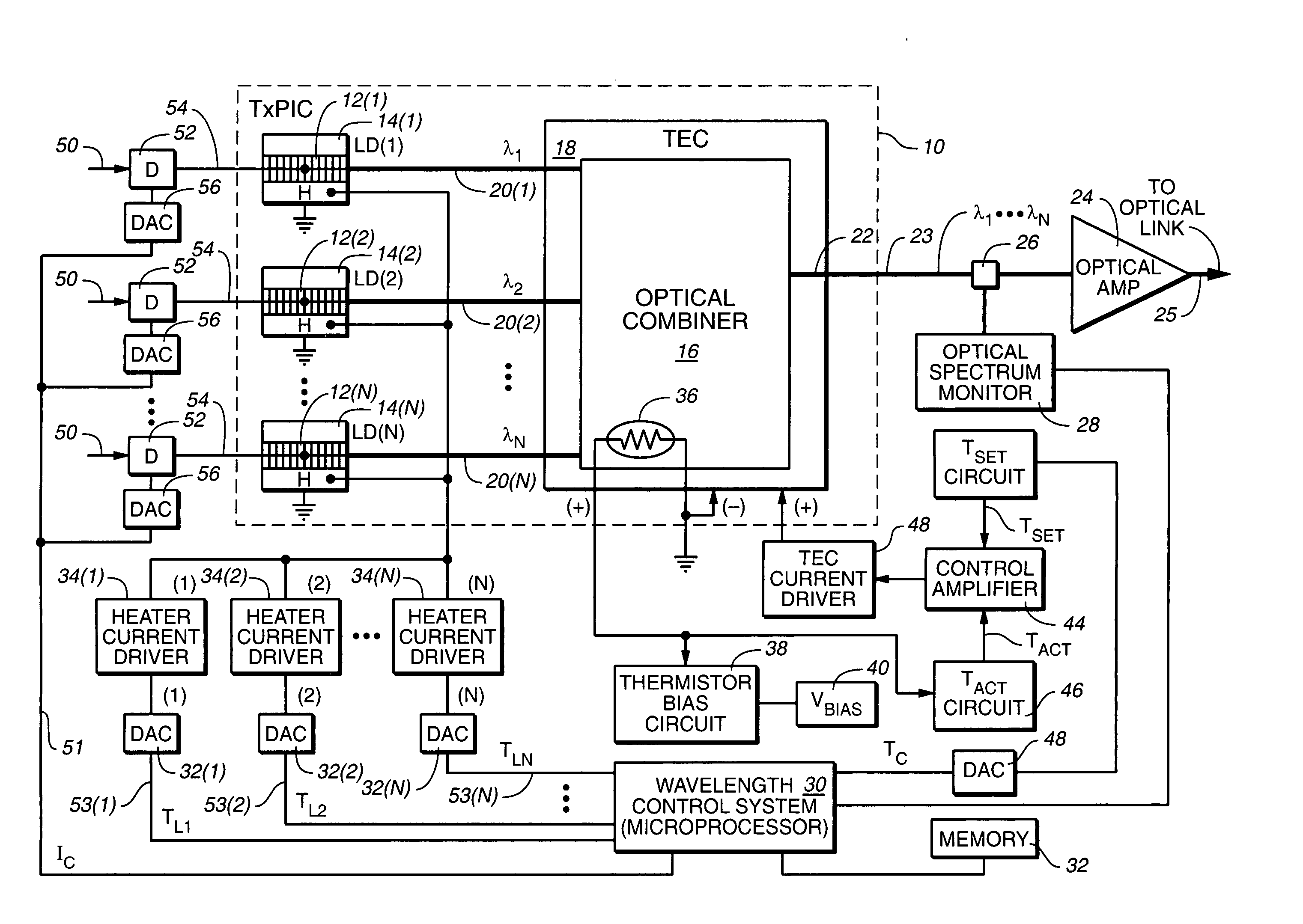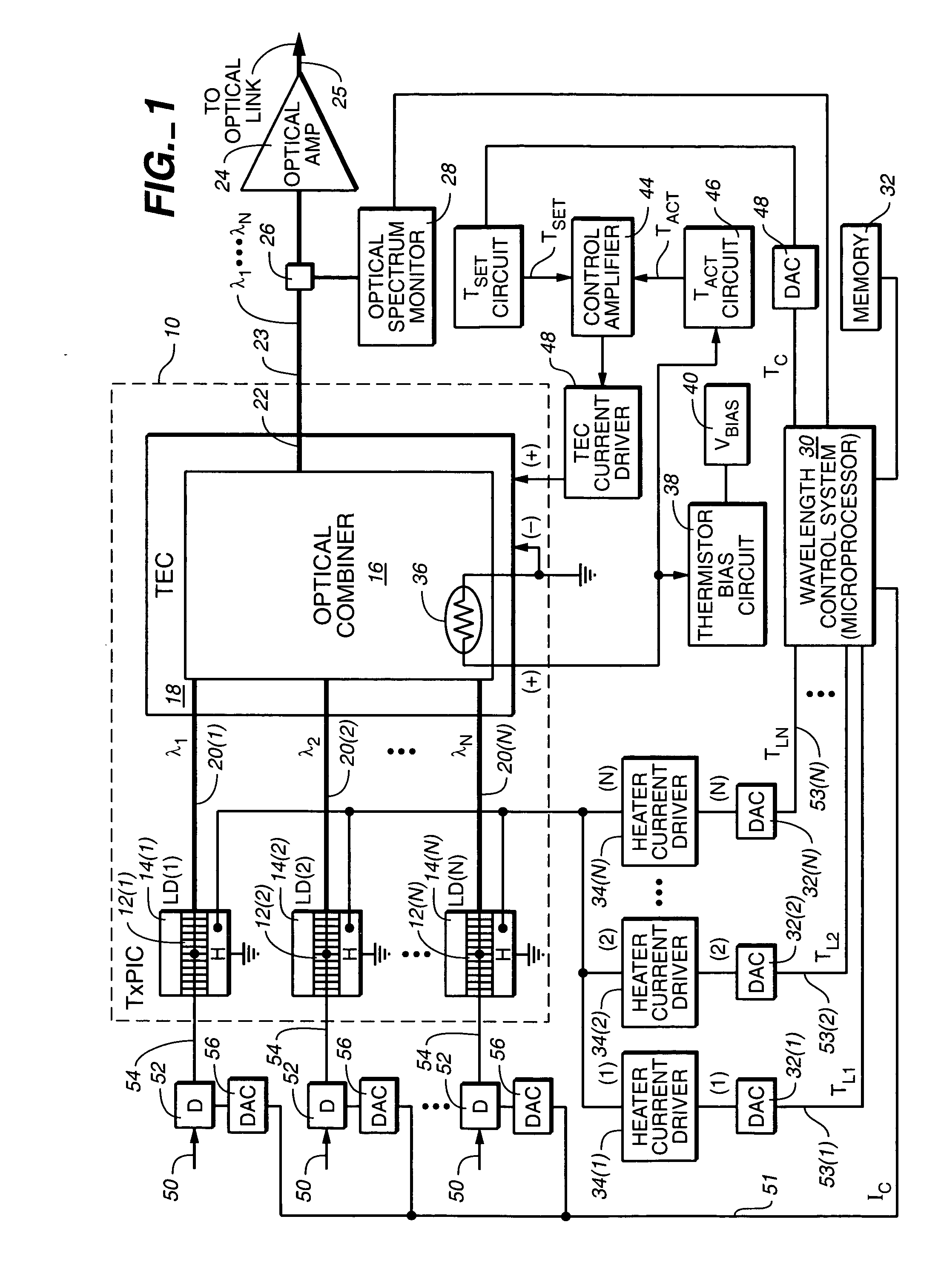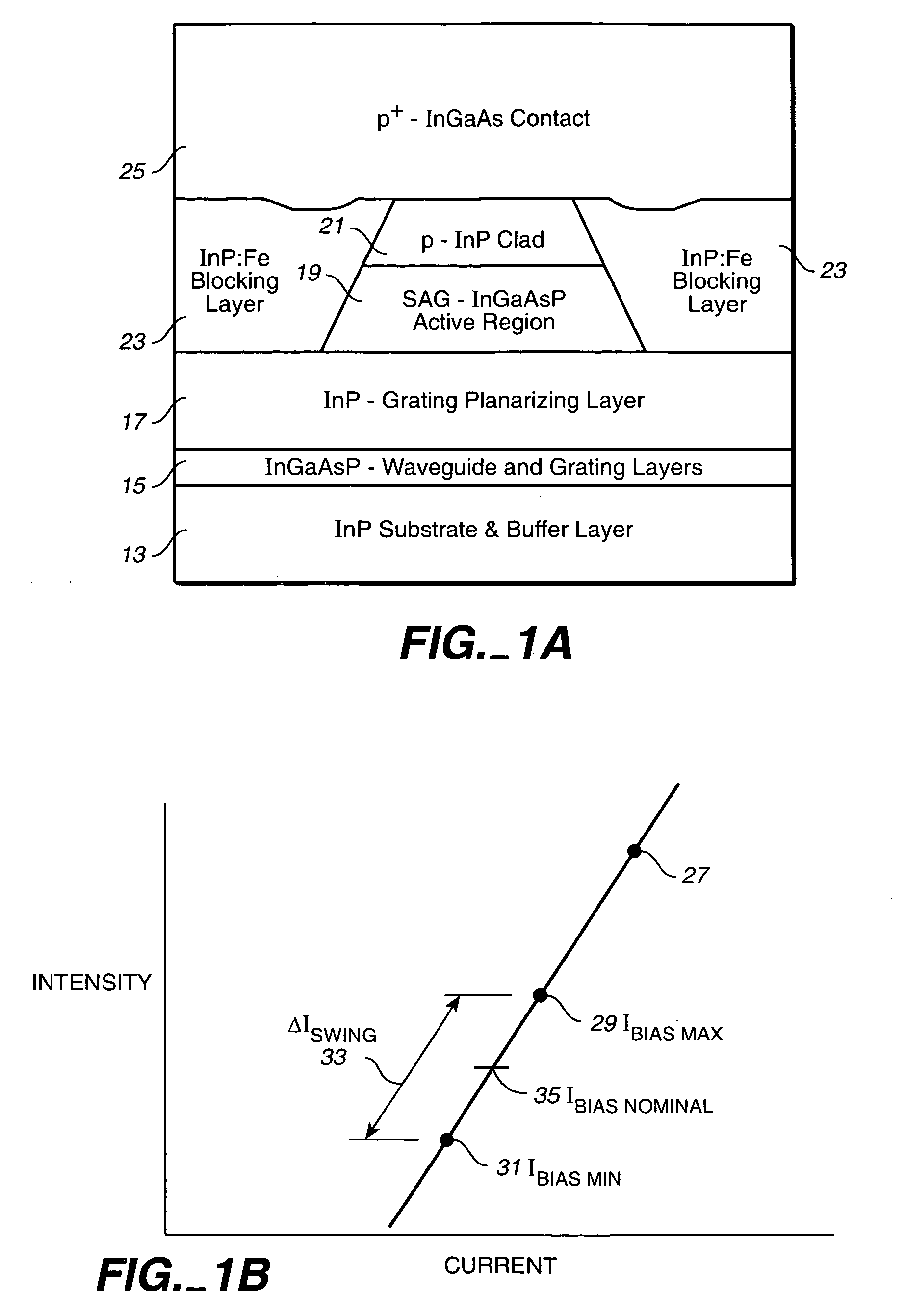Method of tuning optical components integrated on a monolithic chip
a monolithic chip and optical component technology, applied in semiconductor lasers, electromagnetic repeaters, instruments, etc., can solve the problems of difficult to manufacture arrays of dfb laser sources with wavelength grids, and dfb laser arrays with wavelength grids. , to achieve the integration of a dfb laser array with an awg optical multiplexer with their respective wavelength grids, the problem of repeated manufacturing
- Summary
- Abstract
- Description
- Claims
- Application Information
AI Technical Summary
Benefits of technology
Problems solved by technology
Method used
Image
Examples
Embodiment Construction
[0115] Reference is now made to FIG. I wherein there is shown an example of an embodiment of this invention comprising TxPIC chip 10 utilizing wavelength tuning elements for tuning the modulated source grid with the multiplexer grid, which are shown in FIG. 1 as thermal tuning elements. However, it should be understood that other wavelength tuning elements are contemplated in this invention, such as modulated source tuning by means of changing laser current and bias to change its refractive index and, therefore, the operating wavelength of a laser. Other wavelength tuning elements include: adding multiple sections to the laser and varying the current in each section (including, phase tuning, which is the provision of a phase section in a DFB or DBR laser), vernier tuning where the best passband response is chosen from multiple outputs of the optical multiplexer, the use of coolers to tune the wavelength grid or individual elements of the PIC, including TECs which are also shown in c...
PUM
 Login to View More
Login to View More Abstract
Description
Claims
Application Information
 Login to View More
Login to View More - R&D
- Intellectual Property
- Life Sciences
- Materials
- Tech Scout
- Unparalleled Data Quality
- Higher Quality Content
- 60% Fewer Hallucinations
Browse by: Latest US Patents, China's latest patents, Technical Efficacy Thesaurus, Application Domain, Technology Topic, Popular Technical Reports.
© 2025 PatSnap. All rights reserved.Legal|Privacy policy|Modern Slavery Act Transparency Statement|Sitemap|About US| Contact US: help@patsnap.com



